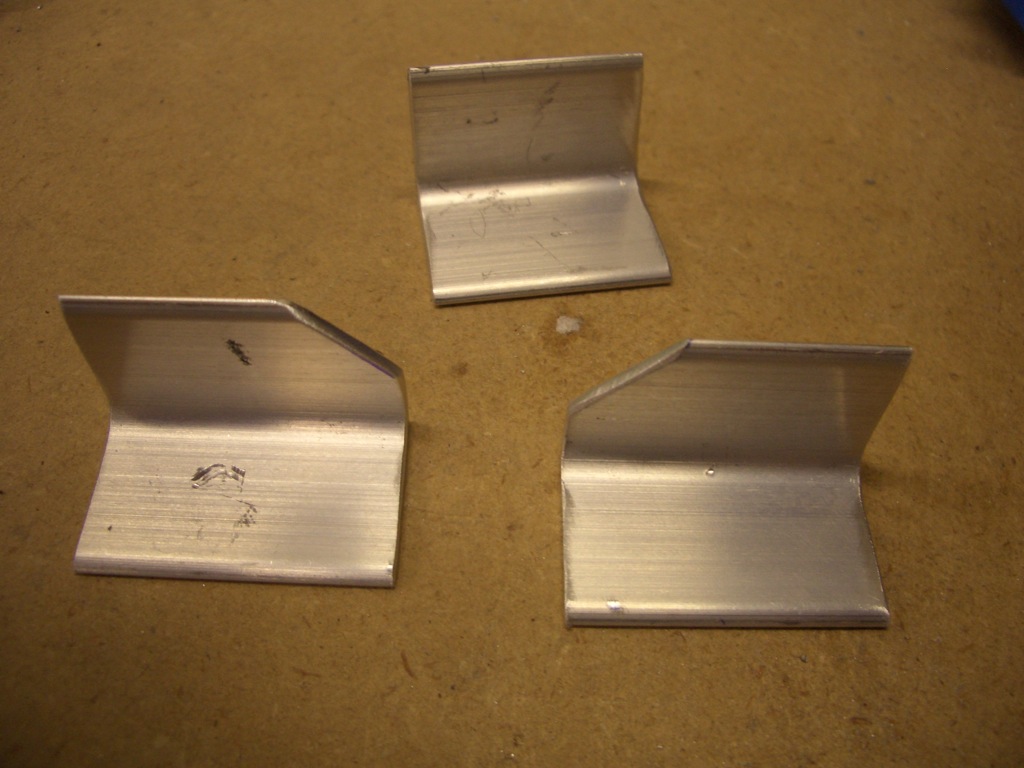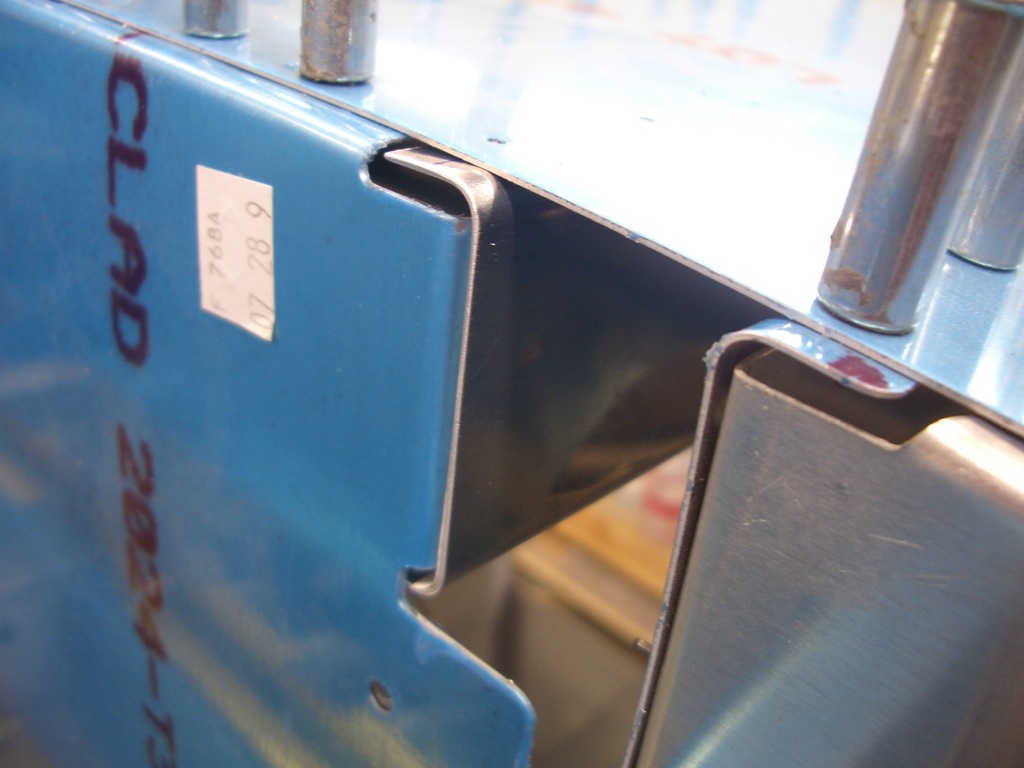
These were then match drilled to the top skin and sub panel.

I also match drilled the center channel attach clip to the channel and firewall.


I fit the instrument panel to the forward ribs and clamped a straight edge to the panel to ensure it was flat, then match drilled the clip to the forward canopy decks.
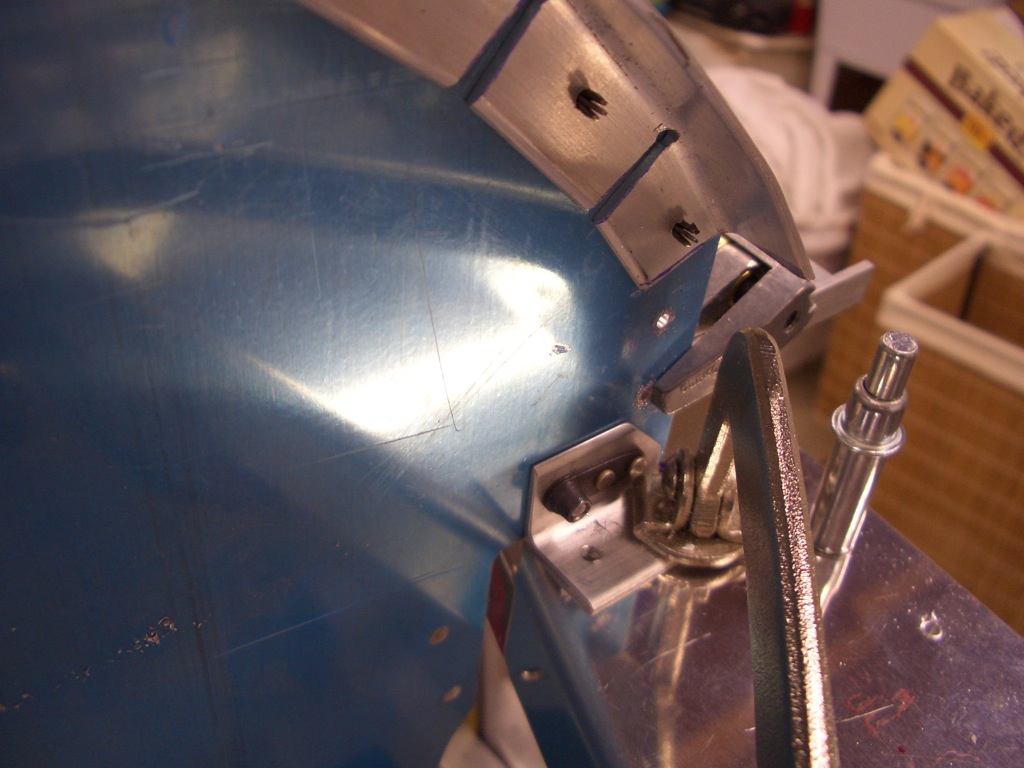
Next, I fluted all of the substructure to ensure the holes were in line, then fit the top skin in preparation for match drilling it to the structure.

I clamped the firewall flange flush with the forward edge of the skin using the cleco clamps. I had to adjust the flutes several times to get the edge of the firewall flange to follow the line of the top skin perfectly.
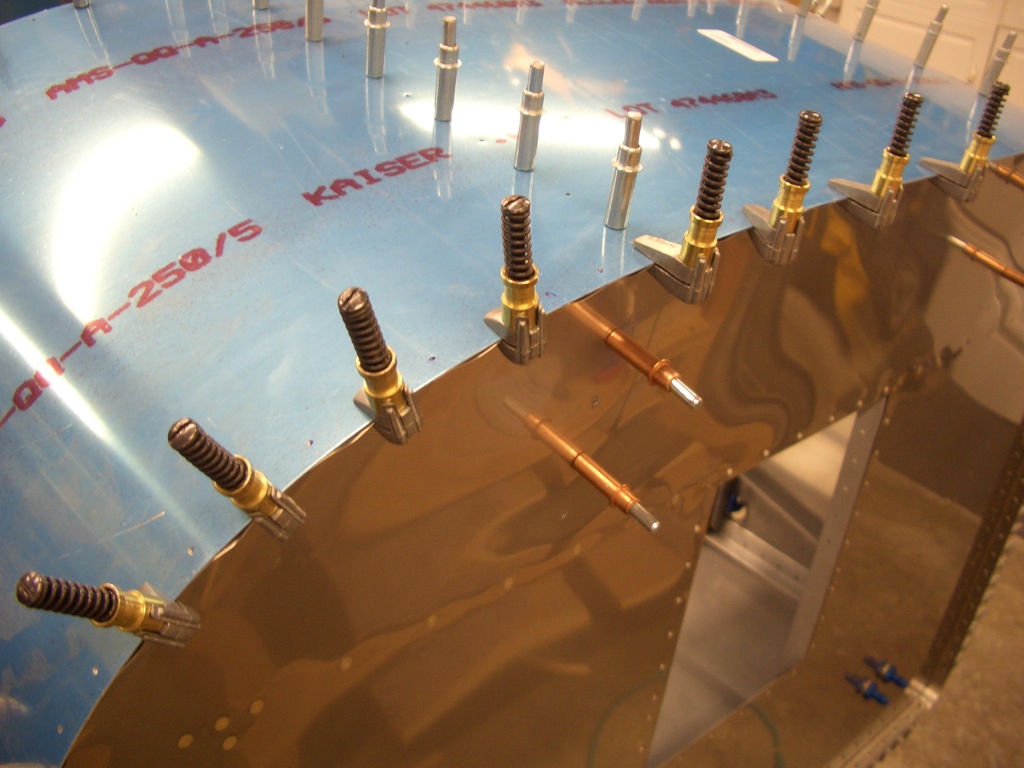
Finally, I match drilled the subpanel, firewall and ribs to the skin.
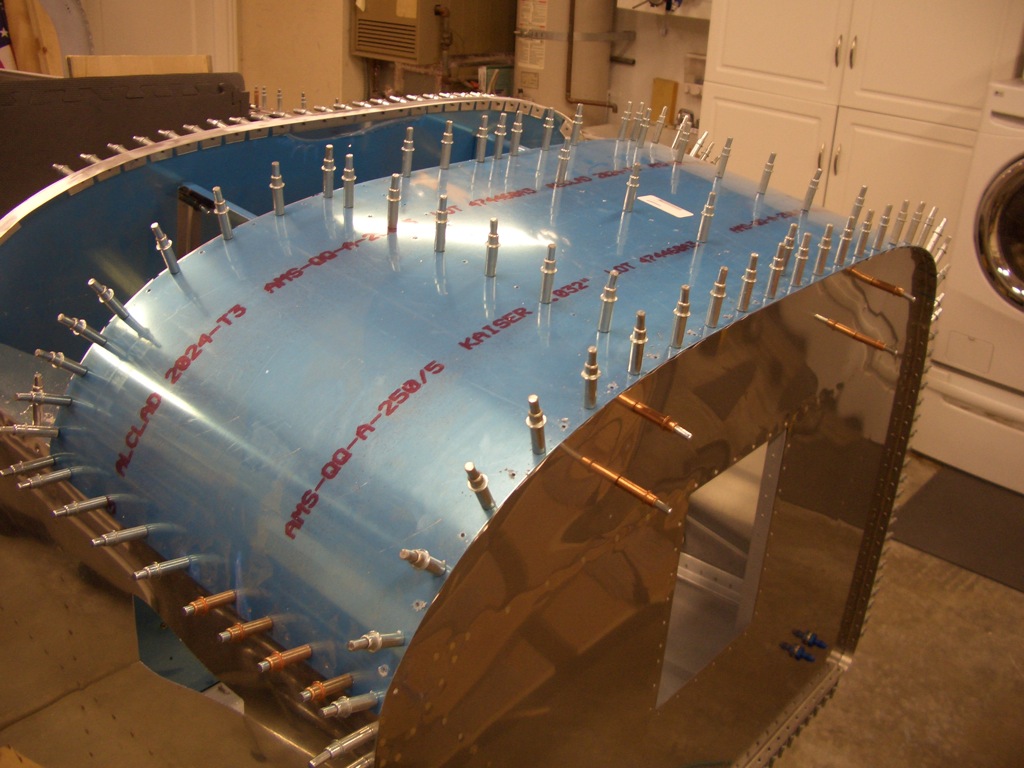
The instrument panel has a stiffener that runs along the back side of the top edge. It’s a piece of 0.063″ angle that’s notched so that it can be bent to follow the curve of the top edge of the panel. I noticed after taking this picture that the wide flanges near the ends need to be cut off to better help this follow the curve of the panel. I’ll have to take care of the tomorrow.
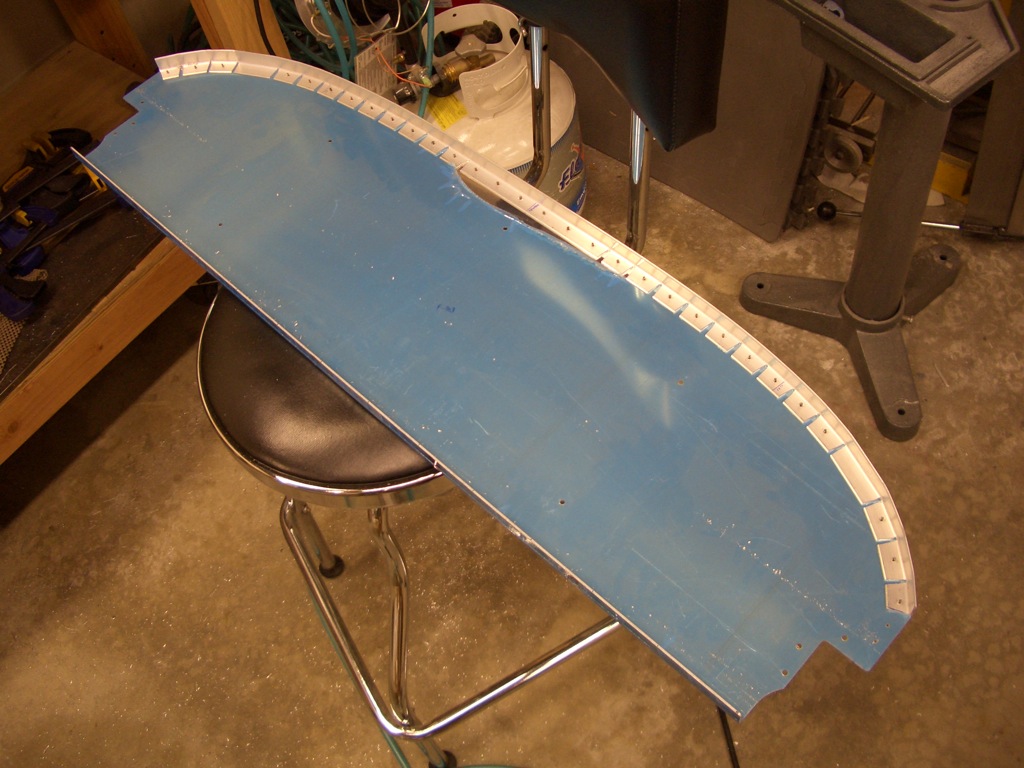
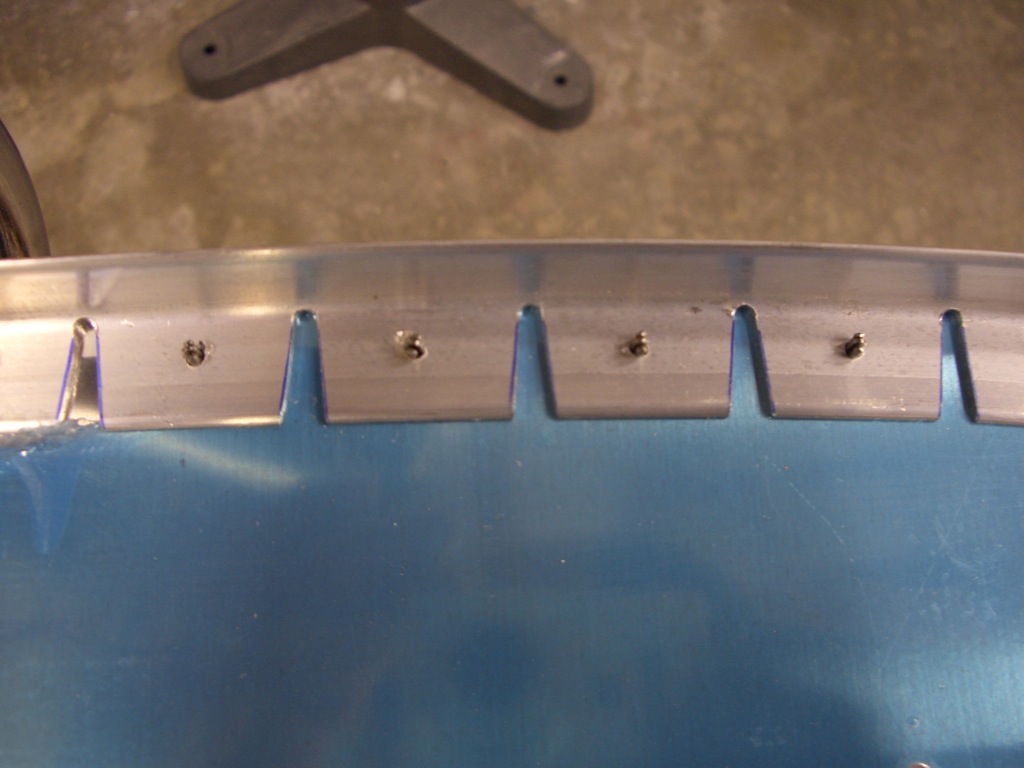
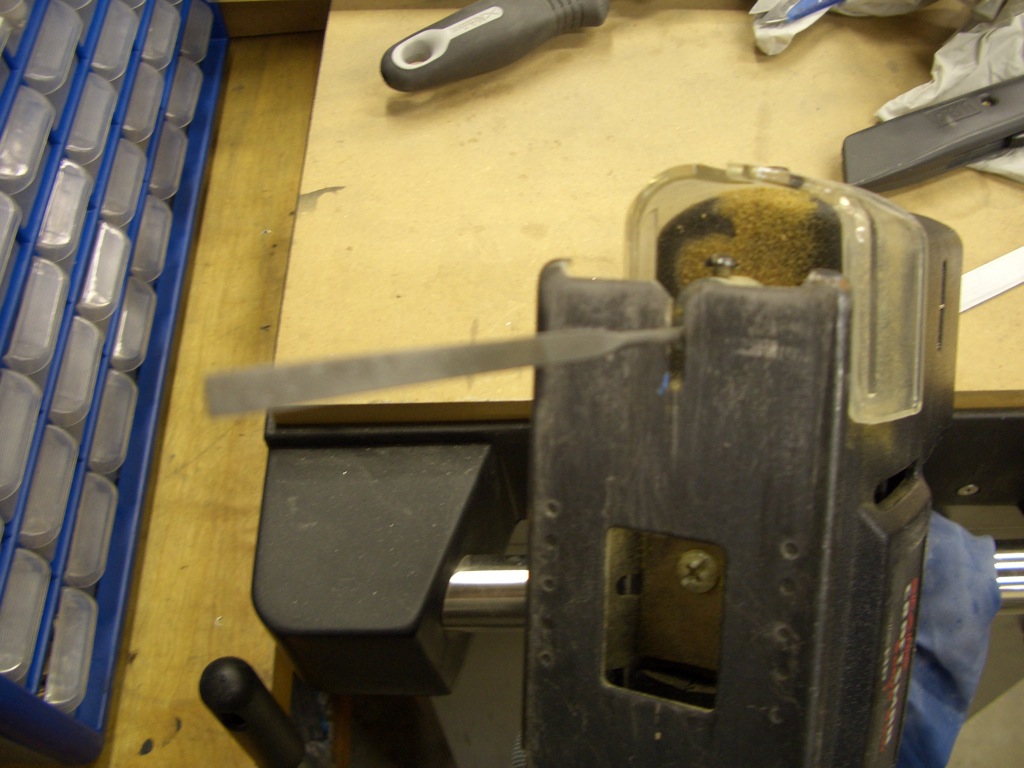
We watched our friend’s kids for the evening, and everyone wanted to play in the plane. My two kids are on the left. One of the other kids is in the pilot’s seat and the other was too busy drilling scrap aluminum to jump in the plane for the picture. Needless to say, I didn’t get much work done on the plane tonight.

I got an order from Van’s today that included the fuel pump cover. This normally sits higher than this because the forward face of this is vertical and the angled face is more steeply sloped upward. This provides room for the much larger Airflow Performance fuel pump/filter/check valve assembly. This configuration won’t work for me because I had to move the fuel pump forward almost 2″ to fit the fuel line between the fuel selector and the fuel filter. This puts the pump outlet far enough forward that there is no room to allow the fuel line on the outlet side room to turn down and drop under the cover.
I reduced the angle of the bends in the cover, which simultaneously drops the height of the cover down as well as pushes the front end forward enough to make room for the fuel line.. I’ll have to fabricate new side covers from some scrap 0.020″ stock, but that’s pretty trivial.

